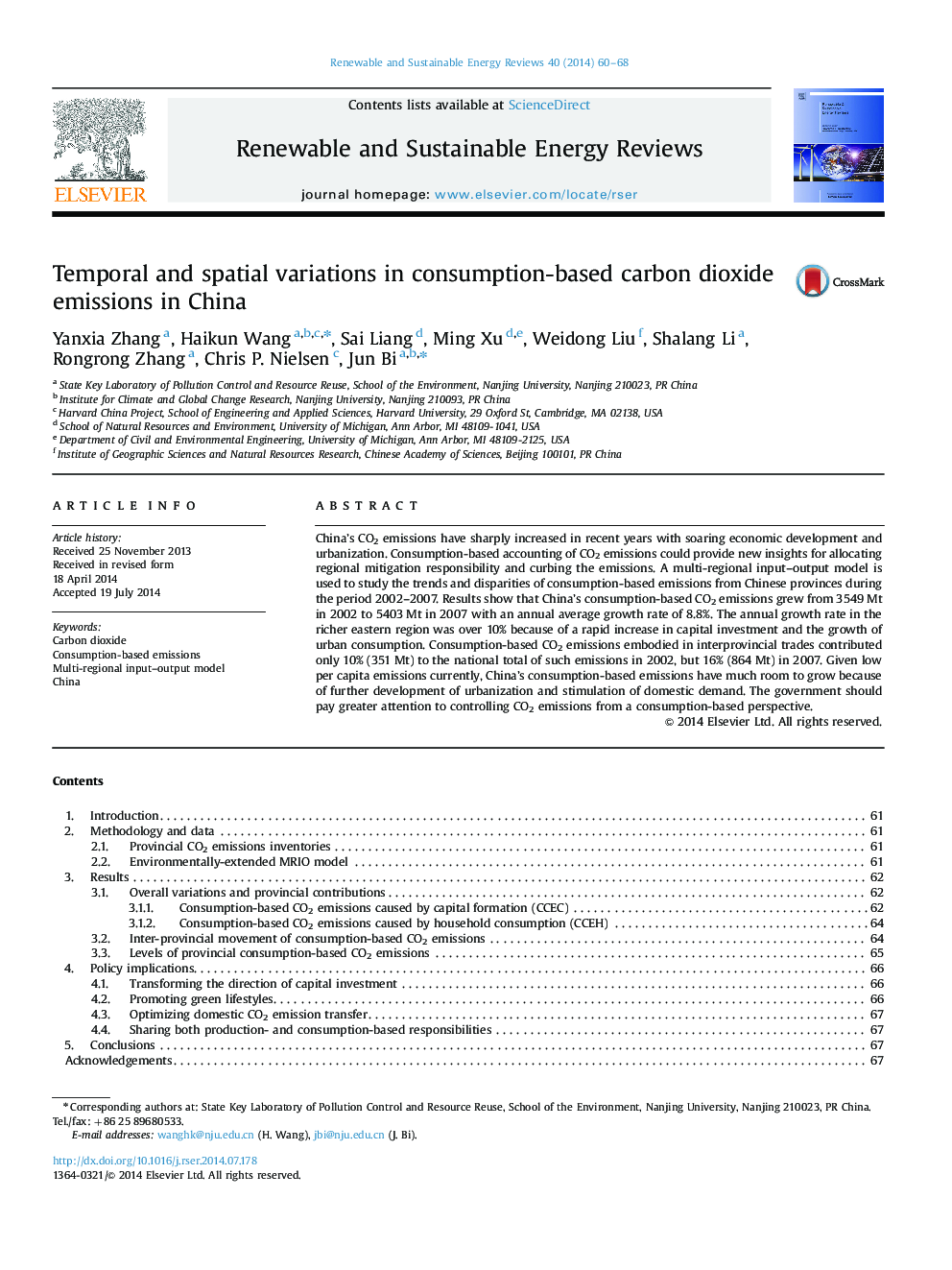| Article ID | Journal | Published Year | Pages | File Type |
|---|---|---|---|---|
| 8118417 | Renewable and Sustainable Energy Reviews | 2014 | 9 Pages |
Abstract
China's CO2 emissions have sharply increased in recent years with soaring economic development and urbanization. Consumption-based accounting of CO2 emissions could provide new insights for allocating regional mitigation responsibility and curbing the emissions. A multi-regional input-output model is used to study the trends and disparities of consumption-based emissions from Chinese provinces during the period 2002-2007. Results show that China's consumption-based CO2 emissions grew from 3549Â Mt in 2002 to 5403Â Mt in 2007 with an annual average growth rate of 8.8%. The annual growth rate in the richer eastern region was over 10% because of a rapid increase in capital investment and the growth of urban consumption. Consumption-based CO2 emissions embodied in interprovincial trades contributed only 10% (351Â Mt) to the national total of such emissions in 2002, but 16% (864Â Mt) in 2007. Given low per capita emissions currently, China's consumption-based emissions have much room to grow because of further development of urbanization and stimulation of domestic demand. The government should pay greater attention to controlling CO2 emissions from a consumption-based perspective.
Related Topics
Physical Sciences and Engineering
Energy
Renewable Energy, Sustainability and the Environment
Authors
Yanxia Zhang, Haikun Wang, Sai Liang, Ming Xu, Weidong Liu, Shalang Li, Rongrong Zhang, Chris P. Nielsen, Jun Bi,
